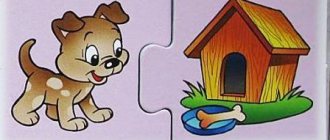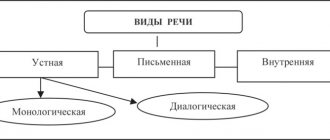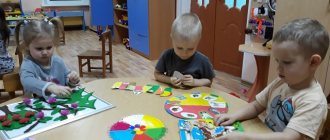Didactic game “Let’s make soup and compote”
By getting to know the world around us, its diverse vegetation and, in particular, fruits and vegetables, children also expand their knowledge about their beneficial properties and the variety of dishes that can be prepared. What a child encounters every day and what he will begin to use in his life in the future is important for his development today.
The acquired knowledge must be consolidated. For this purpose, the board game “Cooking Soup and Compote” was created. The idea is not new, but there is an original execution. The variability of the game has also been expanded.
Purpose of the game:
– consolidate children’s knowledge about fruits and vegetables.
Tasks:
– consolidate knowledge about fruits and vegetables: their names, appearance, growth characteristics, culinary qualities;
– develop the ability to compare and group objects according to characteristics;
– develop thinking, logic, memory, train attention; develop fine motor skills of the hands;
– develop interest in the world around you.
Equipment:
The board game is made of colored cardboard and consists of cut out figures: vegetables and fruits (potatoes, cabbage, onions, tomatoes, cucumbers, peas, beans, beets, apples, peaches, pears, plums, red and black currants), two pots and two plates.
Game action:
– group elements according to their characteristics.
Rules of the game:
The game can be played by 1 or 2 people.
Option 1: “Classification” of vegetables, “fruits” and “berries”.
The teacher places models of the “Soup” and “Compote” pots in front of the child, and vegetables, fruits and berries are placed randomly on the table next to the table. The teacher asks the child to choose an image of a fetus lying on the table, look at what is depicted on it, and give a name to the fetus. Define a general concept: “vegetable”, “fruit” or “berry”. Place the fruit in a suitable pan. What can you cook from it? Compote or soup? (As a result, fruits and berries go into compote, and vegetables into soup.)
Option 2: “Preparing soup and compote”
Each player has a saucepan and a plate. Figures of vegetables, fruits and berries are placed on the table in random order.
The players decide which of them “makes the soup” and which one “cooks”. According to the task being performed, players select the necessary components, name them and place them on a plate (in a pan).
Option 3: “What’s superfluous here?”
The teacher deliberately puts a fruit (two fruits) on the “Soup” casserole with vegetables. Does the child need to find another one and show him why? The Compost casserole game goes exactly the same way.”
Option 4: “Name and tell.”
Children can tell you what vegetables are needed for borscht, cabbage soup, pickles, and so on. Name the compote: “Cherry”, “Apple” and so on
In the future, the collection of vegetables, fruits and berries may be replenished with new and even exotic species (asparagus, pineapple, etc.).
Soup or compote
The didactic game “Soup and Compote” reinforces preschoolers’ ideas about plant products and develops the skill of grouping objects according to certain characteristics. To carry it out, cut out images of fruits, berries, vegetables and root vegetables, and two saucepans from thick colored paper.
Place pictures of food and two saucepans on the table. Children take turns taking a picture, saying what they see on it - a fruit, berry or vegetable, giving the ingredient a name, and determining which pan to put it in - soup or compote.
You can organize a game according to the principle of “what is extra”. Place a few vegetables and 1-2 fruits in the soup pot. The player must determine which of the provisions is superfluous and give reasons for his opinion. The same actions are performed with a compote pan.
For older preschoolers, you can make the task more difficult: let them choose pictures of products used to prepare a specific dish, for example, borscht, okroshka, vinaigrette.
Didactic game “Cooking soup and compote”
Kristina Erbulova
What else to read: Didactic game “Berry, Vegetable or Fruit?” 5-6 grade
Didactic game “Cooking soup and compote”
I bring to your attention the didactic game “Cooking Soup and Compote” for cognitive development and to familiarize yourself with the environment.
Goal: to introduce the concepts of “soup” and “compote”, repeat the names of fruits and vegetables with children, consolidate the ability to divide them into groups, develop motor skills and coordination of finger movements in children, arouse cognitive interest and perseverance. Develop vocabulary, memory, speech.
Tasks:
Replenish vocabulary, develop oral speech, hand motor skills, memory, thinking, attention; To consolidate children’s knowledge about vegetables, fruits and berries, to name them correctly, classify and use the general concepts of “vegetable”, “fruit” or “berries”; Form an idea of the appearance features and where they grow;
Equipment: mock-ups of “Soup” and “Compote” pots, images of fruits and vegetables.
Game progress:
Option 1: “Name and tell.”
The teacher places models of “Soup” and “Compote” pots in front of the child and places fruits and vegetables on them. The child should call the vegetables located on the pan the name “Soup”, fruits and berries on the pan called “Compote”.
Option 2: “Classification” of vegetables, “fruits” and “berries”.
The teacher places models of the “Soup” and “Compote” pots in front of the child, and vegetables, fruits and berries are placed randomly on the table next to the table. The teacher asks the child to choose an image of a fetus lying on the table, look at what is depicted on it, and give a name to the fetus. Define a general concept: “vegetable”, “fruit” or “berry”. Place the fruit in a suitable pan. What can you cook from it? Compote or soup? (as a result, fruits and berries go into compote, and vegetables into soup).
Option 3: “What’s superfluous here?”
The teacher deliberately puts a fruit (two fruits) on the “Soup” casserole with vegetables. Does the child need to find another one and show him why? The Compost casserole game goes exactly the same way.”
Didactic game for disabled children “Nakhodilki”. Game from a hardware store Didactic game for children with disabilities “Nakhodki” Game from a hardware store, because the idea of this game was born from a visit to the store. Didactic game made of felt “Compote” on the theme “Fruit” Didactic game “Compote” Dear friends! I bring to your attention the didactic game “Connection”. The goal of the game is to teach children to distinguish. Didactic game made from felt “Jam” Continuing to practice my new hobby: sewing from felt, I decided to transfer the didactic game “Jam” to felt. This is an interpretation. An educational game for introducing children to popular applied arts. Didactic game “Make a pattern” The kindergarten activity program includes the following tasks in decorative painting: learning to draw based on Russian embroidery,.
I play and learn. Pictures for baby development (part 7)
I play and study. Early child development. Pictures with descriptions. Part 7
Plate
You can say that mom is preparing dinner. She is preparing soup. The stove is very hot. It's dangerous to play near her! There is a saucepan and a frying pan on the fire. They are boiled in a saucepan and fried in a frying pan.
Ask your child to tell you what dishes are on the stove. What is it boiled in and what is it fried in? After all, it’s dangerous to play near the stove. Play with the dishes and make some soup.
What else to read: Didactic game “What grows in the garden?”
Dishes
You can say: Dad washes the dishes with warm water. The dishes are fragile and may break. Dishes can be small and small, large and small.
Ask your child: Tell me where the water comes from. What are forks, spoons, knives? What are deep dishes for? “Wash” the toy dishes.
Fridge
You can say: this is a refrigerator. Store food: butter, milk, eggs, fish. Here's the cheese, and here's the meat. The refrigerator is as cold as winter.
Ask your child to: say whether the refrigerator is cold or hot; what is a refrigerator for? if possible, put a shirt or jacket there. Find and name all the products in the images.
A dramatization game with storytelling elements “Let’s make a delicious soup from vegetables”
Lyubimova Olga
A dramatization game with storytelling elements “Let’s make a delicious soup from vegetables”
Notes on speech development
Game - dramatization with elements of storytelling
«Let's make a delicious soup from vegetables»
Purpose: to introduce children to the process of preparing vegetable soup , showing and naming the actions, to develop children’s imagination, to find out whether children know the name and purpose of kitchen utensils (frying in a frying pan)
.
Continue teaching children to answer the teacher’s questions. Prepare children for storytelling , teach them to repeat phrases after the teacher, finish unfinished phrases when the teacher tells the story . Practice the ability to name objects correctly. Develop the ability to play together , listen to the story of the teacher and children .
Preliminary work: conversation about tasty and healthy food , prepared dishes, stove, vegetables .
Procedure: I put a stove on the table, a saucepan on it, a frying pan, a knife, a spoon, and vegetables .
Educator: Guys. Today I will teach you how to cook a delicious soup from vegetables , and you listen carefully and remember what we put in the pan so that you can then tell the cook how we prepared the soup.
Look. What's on the stove?
Children: saucepan.
Educator: there is water in this pan, look (I scoop up the water with a spoon and pour it back)
.
First you need to turn on the stove. The stove is turned on, the water in the pot will soon boil, we need to peel the potatoes. Here are the potatoes, guys, tell me what shape they are , what color they are?
Children: round, brown.
Educator: Now I’ll peel the potatoes, look what the potatoes have become?
Children: pure, white, without peel.
Educator: What do you think, should we throw the whole potatoes into the pan or should we cut them?
Children: you need to cut it.
Teacher: I cut the potatoes into pieces and put them in the pan (the teacher accompanies all his actions with words)
. Now you need to cook the cabbage. I will clear it of leaves and chop it. Guys, what are we doing with cabbage?
Children: chopping.
Educator: I’ll take the carrots and cut them too. Now I’ll peel the onion, chop it finely, then put it in a frying pan and fry in oil. Listen to the oil sizzle in the frying pan: shhhhh. Let's repeat together how the oil sizzles.
Children: shhh.
Educator: I put the onions in the pan and stir the soup. What else needs to be done to make the soup tasty ?
Children: add salt.
Educator: very, it’s a pity “it doesn’t light up”
our stove, but now we will invite a chef and ask him
to cook our vegetable soup on a real stove .
There's a knock on the door and the cook comes in.
Cook: Hello, children. I was told that you prepared vegetable ?
Educator: We wanted to make soup, but our stove is not real. Finish our soup on a real stove, please.
The cook asks to tell us how we prepared the soup .
I’ll tell you first . We poured water into a pan and put it on the stove. We peeled the potatoes and cut them, put the pieces into the pan, then put in the cabbage and carrots. The onions were fried in a frying pan in oil and placed in the pan. We salted the soup, stirred it and set the soup to cook. This is how we made vegetable soup . And now the guys will tell how we made vegetable .
The teacher repeats the story , the children finish the phrases, then invites some children to tell the story on their own .
Educator: today we learned how to cook vegetable soup . Well done guys, I liked how you helped me cook the soup.
Didactic sensory game for kindergarten
Sensory educational game for children 4-6 years old
Sensory educational game “Borsch and compote” Author: Irina Nikolaevna Vasilyeva, kindergarten teacher at Olonsky MBDOU, Irkutsk region, Bokhansky district, village. Olonki.
Description of work: This material will be useful to kindergarten teachers and children aged 4-6 years. This game can be used at themed events, communication, socialization, artistic creativity (drawing, modeling, appliqué in the form of mannequins) (Vegetables and fruits are crocheted from threads). Tasks: to reinforce with children the name “Vegetables and Fruits”, the ability to divide them into groups and introduce children to the new concepts of “Borscht” and “Compote”. Development of fine motor skills by combining vegetables and fruits with buckets with buttons. With the help of riddles, proverbs, and poems, we develop children’s vocabulary, memory, and speech. The educational game “Borscht and Compote” has two names: “Vegetables and Fruits”. In class I use two guys at a time, from the very beginning we play "Vegetables and Fruits" to reinforce, and then we play "Borscht and Compote". 1st place. Game "Vegetables and Fruits". Two buckets of red and yellow colors are placed on the table (buttons are sewn in scattering on the buckets, and the bellies of the buttons are sewn on fruits and vegetables). On another teacher's table there are vegetables and fruits scattered: today we will solve puzzles and look for answers. The rules of the game are explained: I will give you riddles, and you must find a solution between fruits and vegetables. Whoever guesses faster raises his hand, if he is correct, comes to the table, takes the answer and attacks “Vegetables” - the red bucket and “Fruits” - the yellow bucket. The teacher begins to ask riddles, the children listen carefully and find answers to the puzzles. I was born for glory, curly head, whoever loves cabbage soup, look for me. (cabbage). The blue eggs were laid from the bird, they were hung on a tree: shell, pulp, sweet squirrel (plum). What dripped from the ground, fried and boiled? What did we boil in ashes, eat and praise? (Potato). Sometimes green, sometimes yellow, oval shaped. (Pear). I grew up in a flowerbed, I have a calm disposition: wherever I go, I will make everyone cry. (onion). I am sitting on a tower, Small as a mouse, Red as blood, Tasty as honey. (Cherry). The red girl is in prison, the scythe is on the road.. (carrots). The berries are green and everyone praises them, They grow on the bones, They hang in tassels. (grape). Green at the top, red at the bottom, grown in the ground (Beets). Red, ruddy, hanging from a branch. Scrub, bite into the delicious inside. (apple) Green branches grow in the garden. And about them - red babies (tomatoes). At the end of the game, the results are correctly summed up by solving riddles and distributing "Vegetables" and "Fruits". 2nd type of game. “The borscht is made.”
What else to read: Didactic game “Guess the sport.” presentation on physical education
At the beginning of the game, conversation: - What “vegetables” do you know? – What do you think Borscht is made of? – What “fruits” do you know? – What do you think “Kompot” is made of? – Where can I find fruits and vegetables? (If the children suddenly find it difficult to answer, the teacher helps them ask leading questions. At the end of the conversation, summarize what “borscht” and “compote” are made of). Rules of the game. Before the game starts, the teacher divides the children into 2 teams, calling one team “Borsch”, the second “Composed”. In front of each team, at some distance, he places chairs with buckets and places mannequins with fruits and vegetables on a shelf. After the signal, the children must take turns collecting the “Fruits” or “Vegetables” they need. The team that completes the task faster and correctly wins. (while the children are playing, cheerful music is playing).
We recommend watching:
Didactic games with sand for children 3-4-5 years old Fun games for the middle group Game for kindergarten “Family Matters” Didactic games for preschoolers 3-5 years old
Similar articles:
Educational games for preschool and primary school children
Children's garden games for children from 3 to 5 years old
Role-playing game "Hospital" for older preschoolers
Role-playing game for preschoolers 5-7 years old
Didactic game for children of senior preschool age “Riding on the train”
Didactic game for kindergarten. Mom is making soup
Author: Natalia Evgenievna Khokhlova Place of work: MKDOU No. 22, Miass, Chelyabinsk region Position: teacher-defectologist Name of the resource: didactic game printed on the board “Mom is making soup” Brief description of the resource: game for forming a simple sentence of 4 words (accusative case). The purpose and objectives of the resource: developing the ability to formulate sentences based on 4-word thematic images, consolidating the consistency of words in a sentence; developing the ability to use verbs in the present or past tense, answering the questions “What are they cooking?” or “What did you cook?”, consolidating knowledge on the subject “Vegetables”, “Food”. Relevance and significance of the resource: the game can be used by speech therapists, defectologists, and parents in correctional work with children. Equipment: the game is made on a PC (personal computer), consists of cut cards and a playing field. Practical application: individual lessons, frontal correction lessons (as a demonstration of a task or a game directly “one at a time”). Method of working with the resource: 1. Individually: the child takes pictures that are turned over from the stack, puts the pictures one by one next to the image of his mother and says the phrase (mom is preparing potato soup (cooking).) 2. In front: used as a demonstration of the task using magnetic board and magnets; children work verbally and face-to-face instead. One source
Cooking compote
The goal of the game is to develop the skill of distinguishing fruits and consolidating their names in memory.
To play, make images of seaming jars with lids that match the color of the specific fruit. Also cut out pictures of fruits and garden berries.
Give jars to the students. Each player names which compote will be stored in his container, then selects the appropriate ingredients from the set. In this case, the child must correctly name each fruit, then explain to his friends what kind of drink he got, using the relative form of the adjective.
The didactic game “Cooking Compote” can be played differently. Place the cans in front of the players. Give each student several pictures of fruits at random. Appoint one of the players as a cook. He will say what drink should be in a certain can, and the children must look to see if among their pictures there is an ingredient suitable for preparation. During the game, preschoolers must clearly and comprehensively answer the questions: “What is this compote made of?”, “What drink did we make?” For example: “This compote is made from cherries,” “We made cherry compote.”






